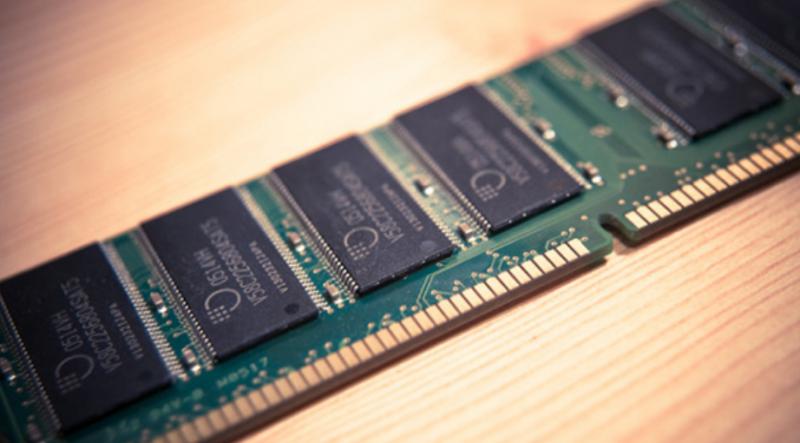Prediction: Price of Memory may Continue to Decline in 2019
2018 saw so many things take place. The industry chain of electronic components saw situation including the short supply of raw materials, mark-up of materials due to under-supply and falling price due to over-supply for several times. So did the memory market. Manufacturers invested and expanded production led to overcapacity and the over-supply of memory. Prices of memory products also declined by over a half, and profits of enterprises were also crippled accordingly.

Samsung Electronics decreased its investment on memory to $9.9 billion in 2018. $8.1 billion was invested on DRAM and $1.8 billion on NAND.SK Hynix broke the record with capital expenditure registering $9.8 billion in 2017 in order to enlarge the capacity of the next chip and flash memory. SK Hynix once planned to increase its capital expenditure to $8.1 billion in 2018. The capital expenditure also reached $8.1 billion, lower than the that of the two. Samsung benefited from the efficiency of 1x nm DRAM an d64-layer NAND production life that exceeded the expectation, Samsung with the growth rate of shipment amount of DRAM and NAND being 25% and 45% in 2018. It was said that Samsung planned to realize the mass production of chip10nm LPDDR5 in the wafer plant locating in Pyeongtaek in 2019.
Also, SK hynix declared that it planned to set up a new memory plant in Lichuan last year. This plant is planned to set up at the end of 2018 and be completed in October, 2020. SK Hynix planned to invested $3.12 billion on this new plant. Besides, SK Hynix continues to enlarge the capacity of the plant M14 in Lichuan and planned to complete the installation of clean rooms in the new plant in Cheongju by the end of September, 2018. This plant was planned to be put into production in early 2019. SK Hynix also planned to complete the extension of its plants in Wuxi, China. While Micron was ready to expand the production of 10nm-level chip DRAM in its plants in Taiwan from 2018 to 2019. Micron’s plant locating in Taoyuan county, Taiwan planned to start to produce 1Xnm and enter the process node of 1Ynm in the second half on 2018. And its plant in Taichung will adopt the new craft 1Znm after abandoning the mass production of 1Xnm products.
Memory Business of TOAHIBA held cornerstone laying ceremony seen by Western Digital Corp for the new flash memory plant of BiCS 3D NAND in Iwate-ken, Japan. This plant will be completed by the end of 2019. TOSHIBA planned to enable the first-stage plant of its Fab6 in Yokkaichi last summer to help increase the output of BiCS 3D NAND in the next few months. The second-stage plant will be deployed in 2019. Maybe due to the fierce competition or the wrong evaluation of the market, memory manufacturers continued to expand the output of memory chips, and the supply of NAND Flash increased by 40% in 2018. To think that smartphone shipment of Samsung and Apple failed to meet the expectation, and domestic cellphone market was extremely competitive in 2018. Besides, decline was seen in the sales volume of smartphones of some brands, PC processors of Intel was in short supply in Q3 peak season, and the order Q4 of North America abridged, that were why the global NAND Flash market was in an over-supply state, and the price of flash memory card declined by a half. Also, the price of SSD fell by 56%, while the price of consumption-oriented NAND Flash declined in the largest range, down 65% year on year.
The shipment of global smartphones declined to 1.45 billion, a decrease of 2.7%, while that in China’s market declined to 0.39 billion, a decrease of 15.5% in 2018. Also, the global share of the shipment declined to 26.9%. All plants lowered their budget in 2019, postponed their plans to expand production of advanced technologies and lowered the growth rate of NAND Flash to control the trend of the falling price. By doing so, they can improve the demand and supply and maintain their profits to the hilt. Some people may say that will prices of relative products continue to fall due to the overcapacity of the memory market? In fact, people demand much for memory. And why? Analysts from Electronics Supply and Manufacturing-China believe that memory chips enjoy a large market. It is predicted that the memory chip market will not keep over-supply, but mark-down will remain the key word of the memory market this year after chip manufacturers planned to cut overcapacity and postpone mass production in 2019.
New products keep cropping up as people’s quality of life improves. Except necessities of life including cellphones, intelligent apparels, household terminals, televisions and automobile data recorders, some emerging products including intelligent robots, AI assistants and intelligent voice boxes become popular products. These electronic devices demand much for memory though they are inferior to cellphones and tablets over carrying capacity and consumes a lot of the capacity of memory chips.
An explosive growth is seen in the sales volume of domestic hardware industry in recent years. Memory chips are increasingly needed since differentiated intelligent products keep cropping up with their functions increasingly upgrading when technologies including internet of things, cloud computing and AI keep developing. Memory still enjoys a bright future as Artificial Intelligent is gradually available to people’s lives, and intelligent hardware products derived from the integration of including cloud computing, big data and mobile internet are widely used.